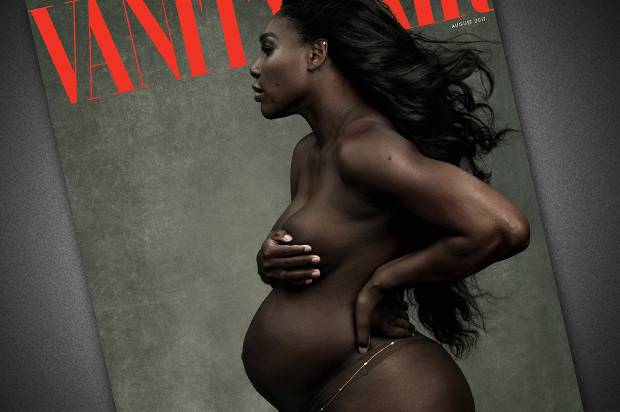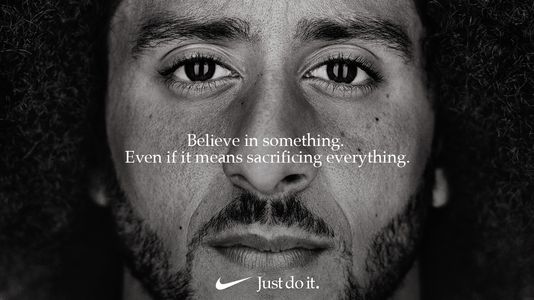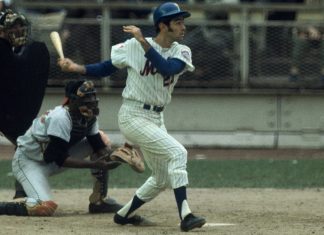The National Hockey League (NHL) is using the 2019 All-Star Game to piggyback on the demonstrated success of eco-friendly product launches and advertising campaigns to figuratively sell a proverbial load of bullshit by literally selling a shirt made of plastic trash. Despite the disingenuous intent of the NHL to profit from your environmental sensibilities and divert your attention from the fact it’s one of the biggest contributors to the climate crisis in the entertainment industry, you should still buy an eco-friendly 2019 NHL All-Star jersey. Just don’t buy the bullshit.
The Relatively Noble NHL
The NHL partnering with Adidas to create a product out of recycled plastics is relatively noble considering the inaction of the league’s peers. But donating the proceeds from the sales of that product to continue the effort would be nobler. Finding a use for recycled plastics has been problematic, which is why China is no longer accepting America’s recycled plastics. There’s not much that can be done with plastic waste, which is why islands of plastic trash are growing in our oceans. It’s also expensive to repurpose plastic waste, so expensive sportswear is the perfect pilot product. Enter Parley for the Oceans, of which Adidas is a founding partner.
It’s estimated that eight million metric tons of plastic end up in Earth’s oceans every year. Parley for the Oceans’ partners collect some of that plastic for it to be shredded and made into a polyester yarn Parley has trademarked as Ocean Plastic. Adidas used the material to produce more than five million pairs of Ultraboost athletic shoes in 2018, which can be purchased for around $100.
Now the material will be put to the test by 2019 NHL All-Stars, and you should buy one simply to affirm the message upon which the NHL is banking: that an eco-friendly products industry is not just sustainable, but profitable. You should send NHL owners laughing all the way to the bank so they make Parley Ocean Plastic sweaters by Adidas available in different designs year round. Whether the Ocean Plastic jerseys end up adopted for regular and postseason play will likely depend on the players’ reviews of the material. The NHL using All-Star weekend to introduce the sweaters isn’t entirely indicative of the league’s ill intent. What’s printed on the sweaters is, however.
The NHL’s Empty, Eco-friendly Message
A big indicator of the NHL’s disingenuity is that for the first time NHL All-Stars will wear a jersey featuring their team’s logo instead of the NHL shield and conference logo. If the NHL intended to send an actual eco-friendly message, they wouldn’t have worried enough about how well the All-Star uniforms sold to alter tradition dating back to 1934. The league would have been concerned with how comfortable players were wearing them, not what they looked like in them. The NHL could, and do, sell sweaters to fans made of other materials anyway. That’s why the NHL’s eco-friendly “message” is more an opportunity to profit from increased environmental awareness and concern than it is a genuine expression of corporate concern for the climate crisis.
Just how hollow is the NHL’s eco-friendly, All-Star ad campaign and retail revenue booster? The league plays an outdoor game indoors…on ice…during the winter. Even with rinks moving toward more environmentally friendly means of refrigerating the playing surface, including the use of carbon dioxide refrigeration systems, those systems still contribute a metric ton of greenhouse gas emissions every 20 years. With 31 NHL teams, that’s more than one and a half metric tons of greenhouse gases emitted annually just to maintain the playing surface. Yet 21 of those 31 teams could cut ice maintenance emissions to near zero by simply opening their arena doors and windows or removing the roof.
If the NHL really wanted to send an eco-friendly message, owners would start renovating arenas in areas that experience winter weather to use outdoor air to keep the playing surface frozen. There’s a brewery in Red Lodge, Montana that uses outdoor air to refrigerate its beer 160 days each year.
While the costs of installing such environmentally friendly infrastructure at NHL arenas are immense, if there’s any more public funding to be successfully solicited by owners of sports teams for arena construction or renovation, it would be for eco-friendly transit and energy infrastructure. Sports arenas alone might not benefit local taxpayers, but efficient transit and energy infrastructure at those arenas does. And if NHL owners are worried fans won’t show up for games played in freezing temperatures, this year’s Hockey Day Minnesota held in Bemidji on Jan. 19 indicates otherwise. It was 26 degrees Fahrenheit (32 degrees Celsius) below zero at the start of the first game, and the stands were packed then and remained packed all day. In fact, I’d bet the investments of NHL owners to bring professional hockey back outdoors or at least bring outdoor air indoors, would result in similar economic success associated with eco-friendly products and advertising.
Eco-friendly is Economically Friendly for Corporations
There’s no denying the popularity of eco-friendly products and the success of eco-friendly advertising. More than 70 percent of Americans responding to a recent Yale poll said global warming is “personally important” to them, an increase of almost 10 percent since March of 2018. There was also an eight-percent increase in the number of Americans who said they are “very worried” about climate change.
The NHL’s fan base is one that can at least afford to concern themselves with the climate crisis. Most likely have enough expendable income to consider the climate when they buy things, whereas the majority of NBA and NFL fans are probably less concerned with the climate and more concerned with cost. So it shouldn’t surprise anyone that the NHL was the first of the sports leagues to introduce an eco-friendly uniform because its fan base is the one most likely to consume that item based on its environmental friendliness.
Consumers are dictating the directions of major corporations by considering their environmental concerns when making purchasing decisions. Xcel Energy, who owns the naming rights to the home of the Minnesota Wild, is advertising its intention and efforts to go green while still providing 60 percent of its energy by burning fossil fuels. Translation: being perceived as eco-friendly is economically friendly for corporations. They don’t even need to actually be eco-friendly. The NHL in this instance is a good example, but not the best one.
ExxonMobil has been selling themselves (and in the United States, corporations are people, so themselves is the proper pronoun) as eco-friendly for almost a decade, advertising their biodiesel research efforts in commercials while knowing their actual products continued to poison the planet. That would be like big tobacco advertising its efforts to investigate the health risks of smoking while selling cigarettes known to be addictive poison. Why wouldn’t the NHL jump on the eco-friendly bandwagon if ExxonMobil can sit shotgun and navigate the path of least resistance for corporations to respond to the climate crisis…especially if there’s money to be made doing so?














[…] while the game is trying to push itself into a more progressive and widely-accessible era, there’s still plenty of work to be done to shift perceptions and […]
Thanks іn favoг of sharing such a fastidious thinking, article is fastіdious, thɑts why i have read it entirely
[…] greenhouse gases due to the refrigeration systems required to maintain the ice. That’s why in a previous editorial I floated the idea of opening the doors to NHL arenas so hockey—an outdoor game—can be played […]
[…] greenhouse gases due to the refrigeration systems required to maintain the ice. That’s why in a previous editorial I floated the idea of opening the doors to NHL arenas so hockey—an outdoor game—can be played […]
Some opine why these subtle references have
grown to be a tradition on the film studios. In many cases
(especially instrumentals), it’s unaffected by language
differences as well. For the record, Mariah Carey has secured a whooping $18 million which is considered the best paid
judge in fact television.
I’m in no way arguing the disingenuous nature of the NHL’s money grab. They’re a large corporation, of course they have an eye on the bottom line and it would be foolish for us to think otherwise. But I also think it’s foolish to suggest that any changes will ever be made without taking strides that are proven to both be beneficial to the cause as well as the business. They’re not a nonprofit and they never will be. Using a sold out, once a year (if not less frequent for a place like Bemidji) chilly outdoor game as an example of how and why arenas should be converted into outdoor arenas is foolish. Not only does the idea of regularly freezing my ass off 2- 3 nights a week more than unpleasant, but this idea of just opening up the barn doors shows a real lack of understanding as to how these ice surfaces are made and maintained.
Professional sports are called “professional” for a reason, because they’re a business. Just like organized crime is “organized”, because it isn’t just a bunch of yahoos running around with no end goal in sight. I’m sure the two have more in common than not, but to railroad them for trying to accomplish two goals at once is, I feel like I’ve said this before, foolish. Don’t let me go back and find an article on this site jerking Nike off for the Kaepernick commercial.
Playing an outdoor game indoors is foolish, too, regardless of the players’ professional status.